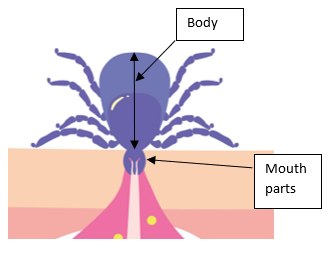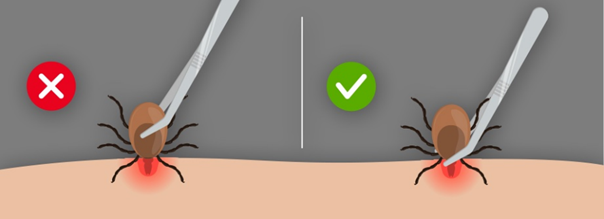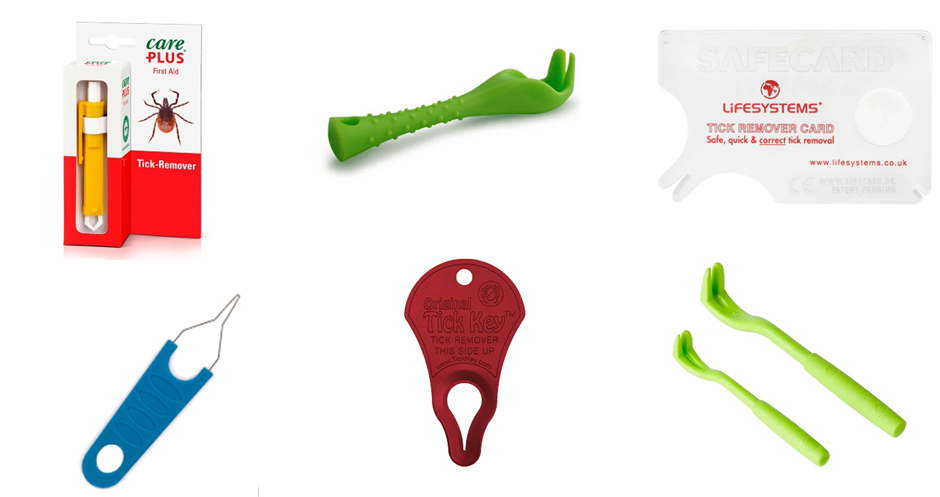How to remove a tick
There are a lot of old wives’ tales and misconceptions about removing ticks. These usually involve burning the tick or applying alcohol or petroleum jelly. These need to be discouraged as they are more likely to make the tick stay attached rather than remove it. Some of the methods may also cause injury to the patient.
The diagram below (repeated for convenience) shows a tick biting skin. The mouth parts are embedded in the skin and the body is above the skin. Successful tick removal methods involve getting underneath the body of the tick and pulling perpendicular to the skin without squeezing or twisting the tick. Squeezing the tick means more saliva, possibly containing bacteria or viruses, entering the body through the bite so increases the chance of contracting a tick-borne disease. Twisting the tick increases the chance of the mouth parts remaining embedded in the skin.
Diagram showing correct placement of tweezers to remove a tick:
Ticks can be removed with tick removers, tweezers or if nothing else is available a piece of card or fingernails.
There are lots of different types of tick removers (see below for some examples), but they all work on the removal principle of part of the tick remover going underneath the body and then pulling to remove the tick. It may be worth familiarising yourself with the instructions for the type of removal tool stocked in your pharmacy. You could use it as a link selling opportunity if the patient is purchasing a first aid kit or products such as insect repellent.
The following video demonstrates best practice for tick removal including how to remove a tick if a tool is not available.
Lots of people are worried about what happens if part of the tick remains in the skin after removal. This is not serious, and patients should not try to “dig them out” as this is likely to do more harm than good. The mouth parts will remove themselves in a similar fashion to a splinter.
Once the tick has been removed the area should be cleaned with soap and water or an antiseptic. The site should be monitored for signs of infection until it has healed.



